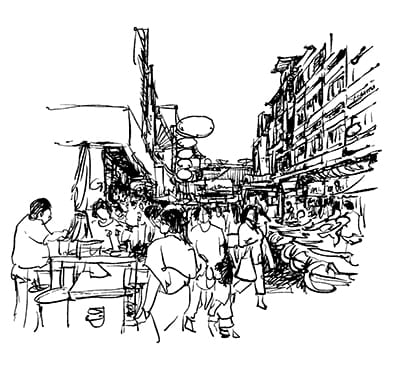The Art of Suggestion
Urban Sketch Course
Urban sketching and the Art of Suggestion to anyone starting out is a difficult thing to get your head around…
You start looking at all these amazing finished pieces on the internet, in art galleries, and even social media. Then you get that disheartening feeling and as a result start to question, “How can I ever do that?”, “Can my sketches ever be THAT good?”.
Well here’s the thing, it all comes with practise (the best things in life do). You need to keep constantly doodling, finding the tools that work best with you, and then naturally developing your own STYLE. In fact, it will only come with time, but it will be worth the wait, trust us.
So we are here to give you some Urban Sketch words of wisdom, for those of you, who are well… a little bit impatient.
TIP 1
BACK TO BASICS
To illustrate, you’re on location and you’ve sat yourself down. After assessing for some time on the location, your point of view and positioning, you’ve decided this is the perfect spot for you.
You’ve got your kit neatly placed out in front of you with your art pad firmly on your knee and pen tightly grasped in one hand.
Then you sigh, and look up. You find yourself in a bit of a state of panic as you have no clue where to begin. Consequently, your eyes will be scanning frantically looking for that spot so you can get racing away with your pen.
This is where Tip 1 comes into play: Firstly, start loosely sketching initial shapes. For example, look for circles, squares, triangles. Simplify shapes of buildings, no detail at all should be noted down at this stage.
You want to make sure you’re getting all your shapes down, and importantly making sure it’s all proportional, scaled up correctly on the page. (Use a grid if you need to.)
Don’t get too overwhelmed, your eyes will naturally want to dart and look everywhere but treat your view like you would your page. Instead, concentrate section by section (if that’s easier for you to visualise).
TIP 2
Composition 
In contrast, this next tip is pretty easy to get your head around. If you are struggling on your composition or sat wondering, “What shall I include in my sketch?”.
Start by making a viewfinder with your fingers. Do you want a landscape composition, or do you feel portrait is a better option?
To help you decide look at your scene ahead of you.
– Are there trees framing the shot?
– What about buildings leading up vertically?
– A lamppost you want to include but cut the rest to the left of the post?
Begin to use objects in the scene to create your own personal frame. Anything that doesn’t enhance your image, doesn’t get put on the page. Or as they say in the theatre “didn’t make the cut”.
TIP 3
DON’T GET TOO ‘BOGGED DOWN’
Now you’ve decided on your composition and have your basic shapes down on the page it’s easy to get yourself bogged down with including everything in the frame.
Like we have stressed before and will continue to stress, you include what you want to in that scene. Besides, urban sketching is about transporting yourself to a particular moment and allowing other people into that art capsule with you.

TIP 4
JUST GO WITH IT!
If you put pressure or strain on yourself when sketching, that will come across to people when they view it.
After all, this is a fun, mindful activity.
Having a playful attitude when it comes to urban sketching is vital. In fact, it then enables you to take risks, try new things and not take yourself too seriously.
TIP 5
TRUST YOUR BRAIN
This sounds pretty heavy right?
Well actually, Urban Sketching can be a relaxing activity.
Of course, it also relies on the viewer’s eye moving through the picture, seeing what it wants to see. In other words, we are all different and our minds work in different ways.
So what draws you to an image and catches your eye could be completely different to why another person was drawn to the art work. Perhaps you like the framing, another person may be drawn to the textures?
TIP 6
Art isn’t all in the detail
Contrarily to the famous saying “it’s all in the detail”, sometimes, you must take a step back.
The beauty of Urban Sketching, and probably the most useful and difficult tip to get your head around is the art of suggestion.
For example; you have a brick wall in your sketch, and you begin to draw it out then spend your time drawing each individual brick. A very literal interpretation of a brick wall.
Similarly, this example image to the left.
Of course, there’s nothing wrong with doing that if that’s your preferred way to work.
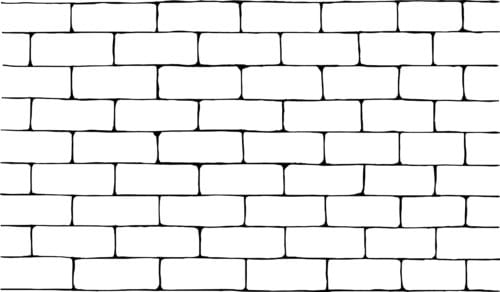
However, have you ever thought of maybe only including a few bricks? WHAT? Surely people won’t know that’s a brick wall will they?
CORRECTION.
Take a look at this example to the right.
Now, because of the rough outline and suggested shapes of bricks as well as a little texture, it’s still very clear that this is a brick wall. It’s much more playful and suggestive. Most importantly, it’s how you use your pen techniques, tools and expression to suggest a particular thing.
You see, the mind can be extremely powerful!
Therefore, say a lot with very little.
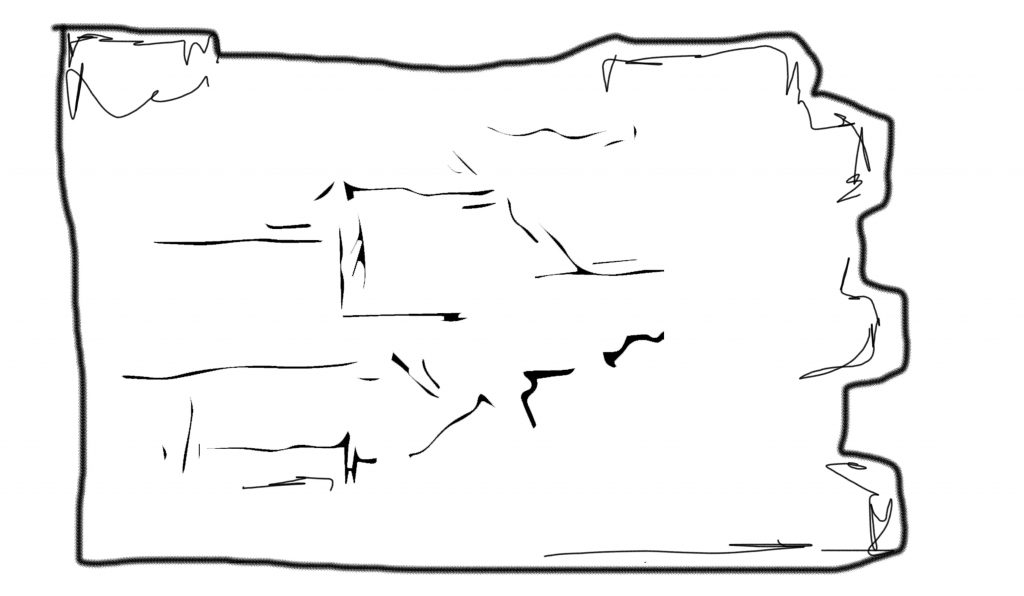
Take a look at these different styles you could use to draw brickwork below:
Line Drawing

Block Colour

Quick Sketching

Art Shading

Partial Shading

Cross Hatching

TIP 7
FIGURE IT OUT
Do you like thrillers? Perhaps a crime series?
Let’s think about this…
The reason we all get hooked is because the film or series isn’t a literal interpretation. In other words, what kind of ‘who done it’ would be any good if the murderer was pointed out to us?
We are left to figure things out and put the situation together in our minds, thus making it more exciting.
Well let’s put this theory to our sketchbook pages, people don’t want to see a literal interpretation of the location. Instead, they’d interact more if you gave them something to think about.
For example, look at this art piece to the right, what do you see?

Ordinarily, a triangle would be the most popular answer. But do you see?
You don’t have to include all the lines for the human mind to see it’s a triangle? These are called implied lines.
When you start advancing with your art work, you’ll find this idea easier to grasp. Naturally at first you will want to draw every brick, you will join the roof of the building to the house.
However, just know by leaving suggested lines, or even breaks between your lines, can still create wonderful and beautiful effects.
TIP 8
TRY AND FIND A WAY TO TAKE THE PRESSURE OFF
There will always be certain subjects, and objects that you don’t feel comfortable drawing, almost like the object is intimidating.
For instance, cars? Clouds? Water?
In truth, this is normal; all artists will have a little niggle that they try to avoid. The best thing is to take the stress off yourself and just find new ways of representing that object.
Remember: your art work doesn’t have to be literal. Practice with your pen techniques, mark making and play around with the aesthetic.
Take a look at these examples to the right showing different ways of drawing water by creating different markings.


TIP 9
PACE
Play around with pace; find what kind of speed works when you are sketching. Depending on the style, some people may choose to work loosely, therefore at a much faster speed. In contrast, some people might be very intrigued with detail and will thus work at a very slow pace.
DO experiment around with your working pace, especially when you are just starting out.
Push yourself, you never know you might go from being a tortoise to a hare?
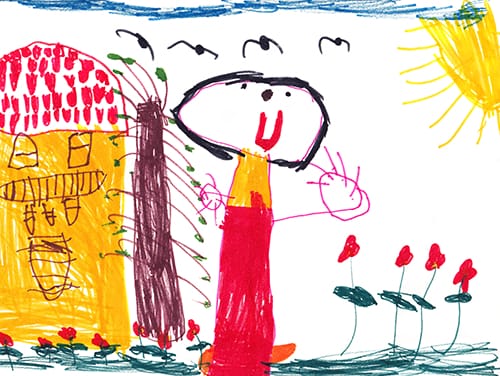
The Art of Suggestion
For example: Take this sketch, it’s a man golfing.
Surely nobody would argue with that?
But this isn’t perfect, it’s expressive yet we can all still visually depict the scene.
TIP 10
PICTURE PERFECT?
Finally, your picture doesn’t have to be perfect.
To illustrate, consider when a child draws a picture in art class and says ‘that’s my house’. To our eye it might just look like a very loose image/blob/scribble, bearing little or no resemblance to a house. But we take that as face value, and don’t question it.
Art is a form of expression, and we want you to have that freedom, that abstract quality to your work.
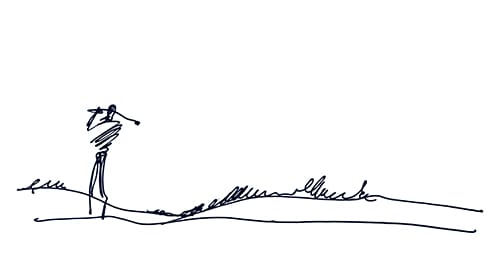
Remember it’s all about practise. Furthermore, please refer back to this guide whenever you need to in the search of finding your own style!
Our Courses
Whether you’re brand new to urban sketching or a confident artist, our engaging, video-based online courses teach you step-by-step how to go from blank page, to capturing the bustle and beauty of the world around you, in the unique and fashionable style that is urban sketching.



